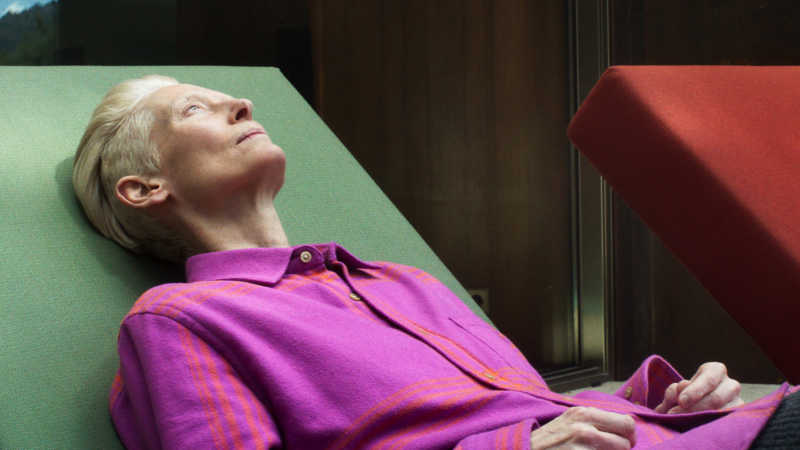How to be not lonely? ‘Cohousing’ is an answer for some people
The meltdown started with a small thing — a bag of suckers. Rachel Damgen’s four-year-old son wanted one. She said no.
It was a few years ago, in the middle of the pandemic, when it was not unusual for her to be home alone for an 11-hour stretch with her two young kids. She was struggling with the isolation. Small obstacles felt outsized.
“I wound up on the floor crying too,” Damgen remembers. “Just holding both my kids, and feeling like, ‘Man, this is impossible.'”
It was a turning point. With their extended families far away in other states, she and her husband, Chris Damgen, began asking themselves if there was any way to reconfigure their lives in order to optimize for more support and community.
The answer they found was cohousing.
Today, the Damgens live in a 30-unit planned community called Daybreak Cohousing in Portland, Oregon. The couple says the move has been a game changer, both for their own mental health and for that of the entire family.
“We would not have had a third child if we hadn’t been here,” says Rachel Damgen. Their daughter, Caroline, is now one year old. “If we hadn’t been feeling so much better about how our lives were working — if we didn’t know that we had the ability to holler for a neighbor’s help and they would come.”
There are close to 200 of these cohousing communities across the country – according to The Cohousing Association – designed to facilitate community through shared resources and common spaces. Members admit there are many tradeoffs to living in such close proximity to their neighbors including navigating a shared chore list and mutual financial arrangement. But many also say that they’ve found a way to conquer the loneliness and isolation that plagues so many Americans — especially today’s parents.
Neighbors, not necessarily best friends
The ease with which this community engages was on display on a recent day, as neighbors, representing all generations, flowed in and out of the conversation and engaged with kids in the community’s shared courtyard under a towering maple tree. Rachel Damgen’s two older sons threw a football around with a neighbor while the adults chatted. Another neighbor strolled by and offered to let the kids pet her dog.

The residents here describe these relationships as a kind of third category — not family, not necessarily best friends.
“I think the closest comparison I can make is a college dorm,” says Chris Damgen. “Only this time there’s a wall between you, and we’re all adulting, allegedly.”
With parenting especially, Chris Damgen describes a nonjudgmental camaraderie that he doesn’t feel in other shared spaces in U.S. culture. “There’s anguish, there’s frustration,” he says, but fundamentally there’s a feeling of struggling together. “That goes a long way to combating any feeling of loneliness.”

Deana Camp, 73, has lived here for more than a decade. Camp lost her husband a few years ago and despite missing him “desperately,” she says, she is not lonely. If she didn’t live here, says Camp, she “wouldn’t be the same person at all.”
“Deana’s one of the most social people I know,” says Rachel Damgen.
“I’m pretty darn social,” agrees Deana, laughing. “I bake cakes for almost every occasion.”
An idea imported from Denmark
Cohousing has gained traction over the last few decades. Architect Katie McCamant — considered one of the founding members of the cohousing movement — describes importing the idea in the early 1980s from Cophenhagen after studying housing in Denmark. She was planning living arrangements for her own young family. “I just thought, ‘Well, this makes perfect sense,'” says McCamant. When she returned to Berkeley, California, she began working on plans for designing such a community in the U.S.
After decades of living in cohousing and advocating for it, McCamant now runs a consulting company helping others design and construct cohousing communities. The barrier to entry to build a cohousing development can be high, as this kind of new construction is subject to the same market dynamics as any new building. “We’re paying all the same costs as any housing developer,” says McCamant. Finding builders to work on these unconventional housing projects can be difficult. Cohousing communities can take years to plan and execute. Some fail.
Governance requires labor
Among the most significant trade offs cohousing residents cite is a time commitment to governance. Typically communities use consensus decision-making, a process that some say can be onerous. Rachel Damgen and Deana Camp say there are too many committees to count. “Process, facilities, project management,” Damgen ticks off her fingers. “Security, facilitation, steering.” Residents at Daybreak Cohousing are expected to serve on at least two of these committees and also contribute to shared chores like cleaning common spaces and yard work. Cohousing duties can take hours every week.

Much like most condo associations, fees are typically collected every month in most cohousing communities —and decisions are made together about how to spend the shared funds on things like renovations or upgrades in common spaces. This process, too, says Chris Damgen, can be tedious. “You get to know them, their quirks, their mannerisms, their emotions,” he says of his neighbors. “What makes them brilliant people and what makes them maybe less-than-brilliant people, in some cases.”
For many, there are also sacrifices of space. The Damgen family of five lives in a two-bedroom apartment, roughly 900-square-feet. Her two older boys share a room; the baby sleeps in her parents’ room. The family has no plans to move. “Now, where the baby goes, no idea,” says Rachel Damgen, laughing, “a hammock has been suggested to me as an option.”
Rachel Damgen says she does not question these tradeoffs. She recalls a recent day during which one of her children was sick and napping. She needed to pick up the other one. Waking a sleeping child who doesn’t feel well and dragging him along to pick up another kid — that could be an ordeal. These kinds of small but daily emotional upheavals, she says, were exactly the kinds of things that were wearing her down in her previous living arrangement.
But on this day it took her five minutes to find someone to sit in her house for a few minutes while she ran out. Before cohousing she often had the problem of “needing to be in two places at one time.”
It’s one of many things she doesn’t worry about much anymore.
“It’s not uncommon for me to have those hit-you-in-the-heart moments,” she says, “where my kiddos will be downstairs kicking a soccer ball around with a neighbor and I come outside to look and — you just gotta, like, almost pinch yourself.”

A record 24 million people now get Obamacare health plans. Will it last under Trump?
Enrollment in Affordable Care Act health insurance plans has grown every year of the Biden administration, leading to a record high rate of people with insurance.
Tilda Swinton thinks about death and says you should, too
Swinton plays a woman dying of cancer in Pedro Almodóvar's The Room Next Door. "A life spent considering how we're going to spend our end is not wasted time," Swinton says.
Girl Scouts are retiring two cookie flavors (don’t worry, your Thin Mints are safe)
2025 will be the last time you can buy Girl Scout S'mores and Toast-Yay! cookies. They join the ranks of many other discontinued flavors — RIP Mango Cremes with Nutrifusion and cheesy Golden Yangles.
Here’s where things stand for several major landmarks in the Los Angeles fires
The fires raging across Los Angeles are putting some cultural institutions in danger.
Justice Department wants to release only part of its report on Trump cases
Prosecutors dropped the two criminal cases against Trump after he won the 2024 election, and the final report by Smith may be the last chance for prosecutors to explain their decisions.
Trump asks the Supreme Court to block his sentencing in hush money case
President-elect Donald Trump is scheduled to be sentenced on Jan. 10 in New York. His latest legal move to block sentencing comes after a New York appeals court rejected a similar appeal Tuesday.




